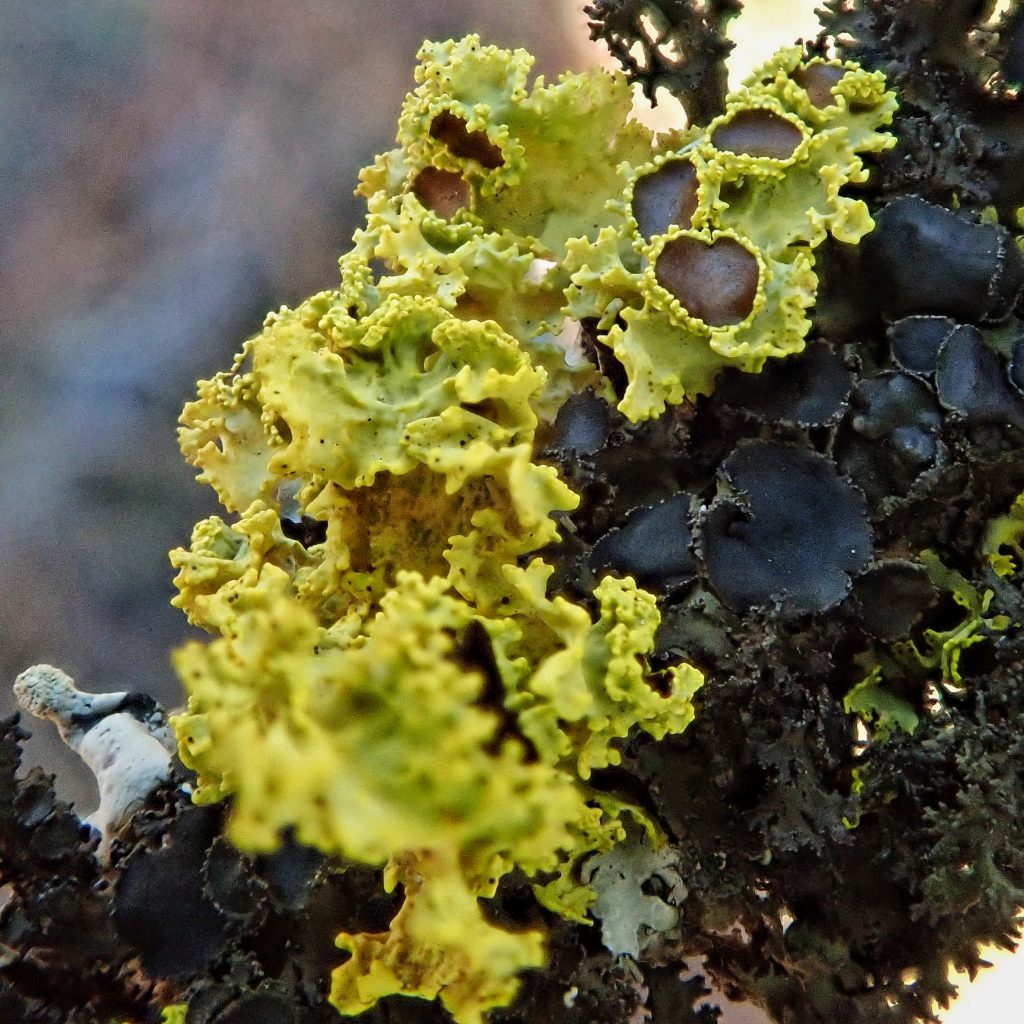
I love lichens! I find their multiplicity of forms and colors to be quite beautiful. But if your idea of beauty requires some level of symmetry then you may not find them beautiful, because there is seldom anything symmetrical about lichens. Instead they are wild, sprawling, jutting, craggy, wrinkled, intertwining, amoeboid, expressions of life expanding wherever it can. For me they are symbolic of the marginally organized chaos of the evolution of life.
But these lifeforms represent the largest gap between my interest level in a group of organisms and my knowledge level (especially as it pertains to their identification) about them. Already I have misspoken, because lichens (which are more technically referred to as lichenized fungi) are not organisms, but are instead groups of organisms working symbiotically, a teamwork approach to survival that benefits both. Although, to be honest, there may be a level of domestication there, and the noted lichenologist Trevor Goward has described lichens as “…fungi that have discovered agriculture…”
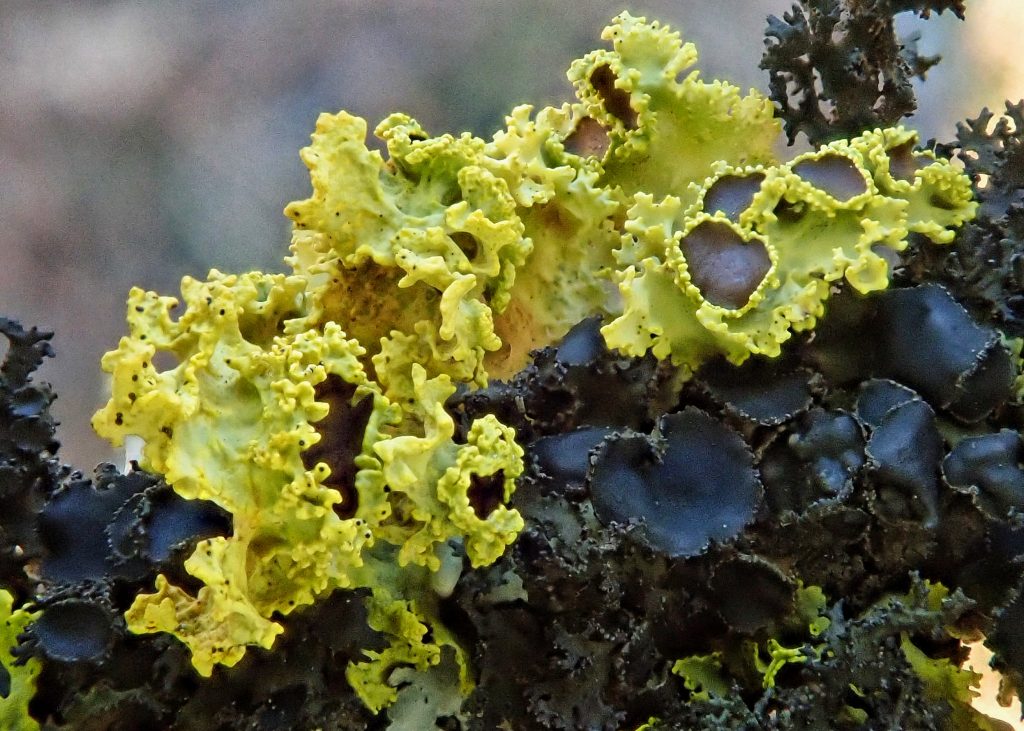
There can be up to 4 species making up a lichen. The primary organism that we see, and the one on which each lichens name is based, is some sort of hyphae producing fungi (mycobiont). This forms the structure of the lichen. But lichen fungi do not form mycelium as most hyphae producing fungi do (that’s not technically accurate; mushrooms, for example, do not form mycelium-they are the mycelium, and what we think of as mushrooms are just the fruiting bodies projected above the soil surface so as to expel spores over a greater area), and so have only their surface and rhizines with which to absorb nutrients, neither of which is effective enough at that process to support the organism.
Fungi in general lack chlorophyll, so they cannot photosynthesize. But lichen have developed a workaround; capturing a single celled organism (a photobiont) capable of synthesizing sugar from sunlight, water, and CO2 . Sometimes it’s algae, sometimes cyanobacteria (which used to be called blue-green algae until it was realized that they were a prokaryote [like bacteria], which contains chlorophyll), and sometimes both.
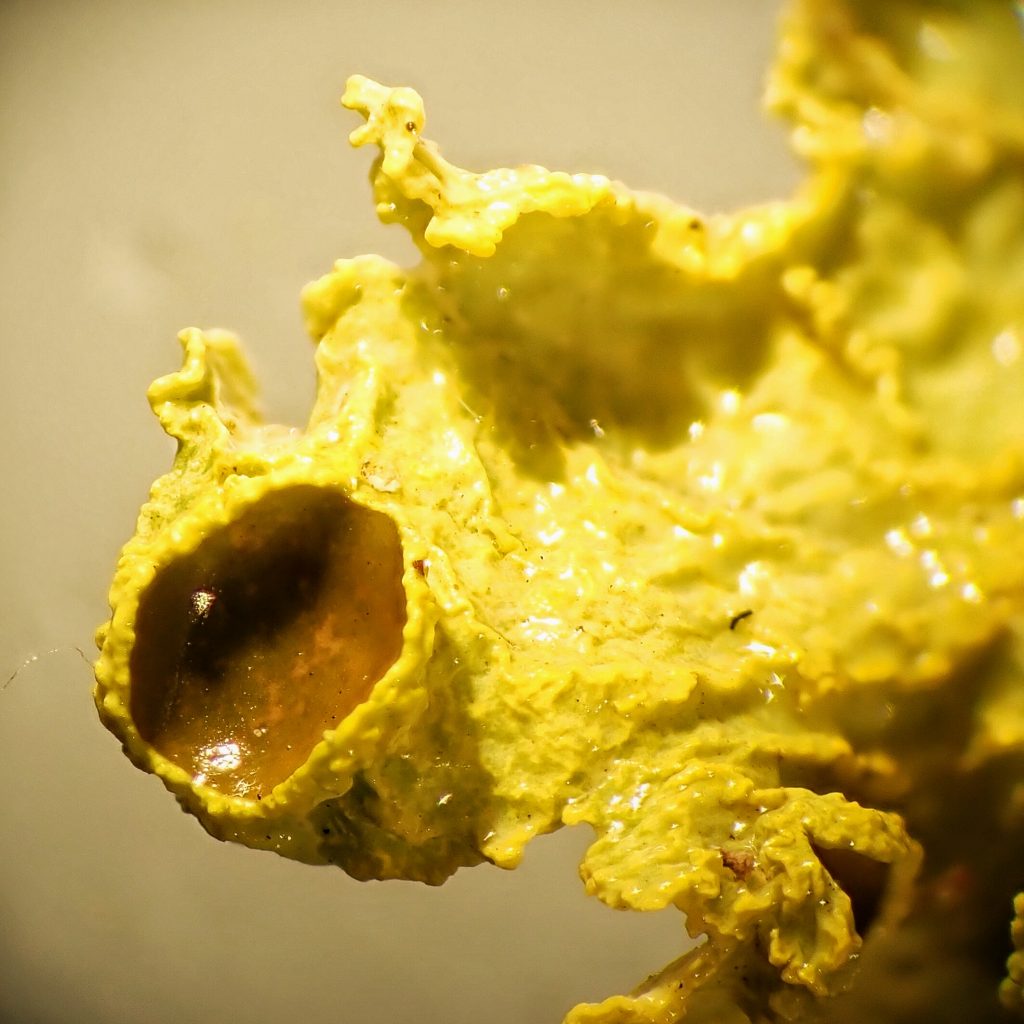
Regardless, they incorporate them into the layer between the upper, outer surface (cortex) and the nutrient absorbing medulla in the center, where the photobiont is protected from UV rays and desiccation, and its glucose production can be absorbed (in part because the lichen bathes it in solvents which weaken the cell wall and allow the nutrients to leak out of the photobiont).
And now they have found yet another partner in the business venture known as a lichen. Ever since 1868, when a Swiss botanist named Simon Schwendener discovered algal photobionts in lichen, it has been taken for granted that the lichenizing of the fungi involved the relatively simple addition of photobionts, although there has long been consternation over the inability of lab workers to grow new ones by combining known symbionts. Then in 2016 Tobi Spribille (Spribille, et. al. accessible here) rocked the botany world by publishing a paper showing that many, and maybe most or all, lichens contained Basidiomycete yeasts in their cortex! And they have been shown to be critical not only to cortex formation but to production of various acids and other defensive toxins. Lichen are proving to be much more of a complex relationship of intricate interactions than just a thing growing on a tree limb.
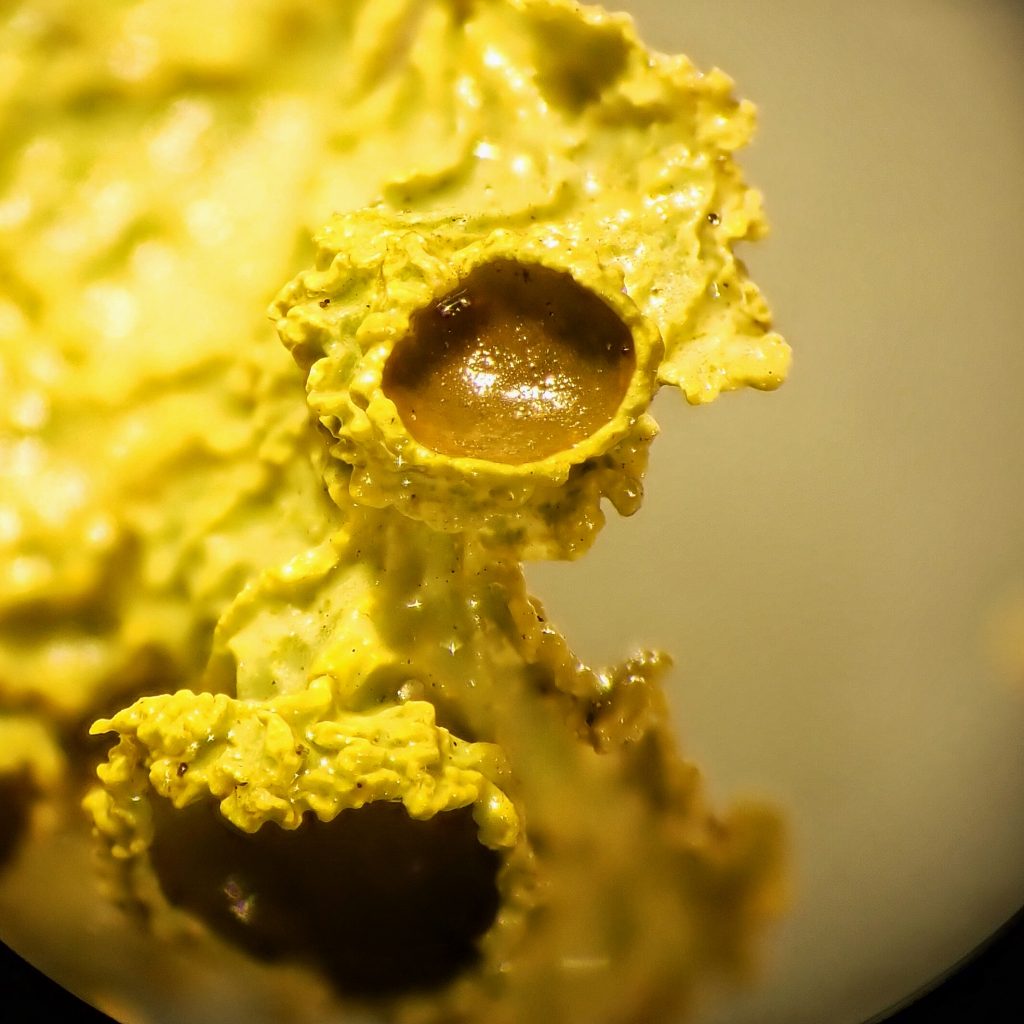
As is true of so many of the cryptogams (a very loose and non-taxonomic group that is made up of spore producing organisms) lichen resist easy identification. Partly this is due to many salient characteristics being tiny, and even microscopic, a difficulty only exacerbated by the extreme variability of intraspecific morphology, botany-speak for ‘no two look alike’. Because of these factors many lichens can only be positively identified if one also does chemical reagent tests. One of these days I will make that leap, but I haven’t done so yet.
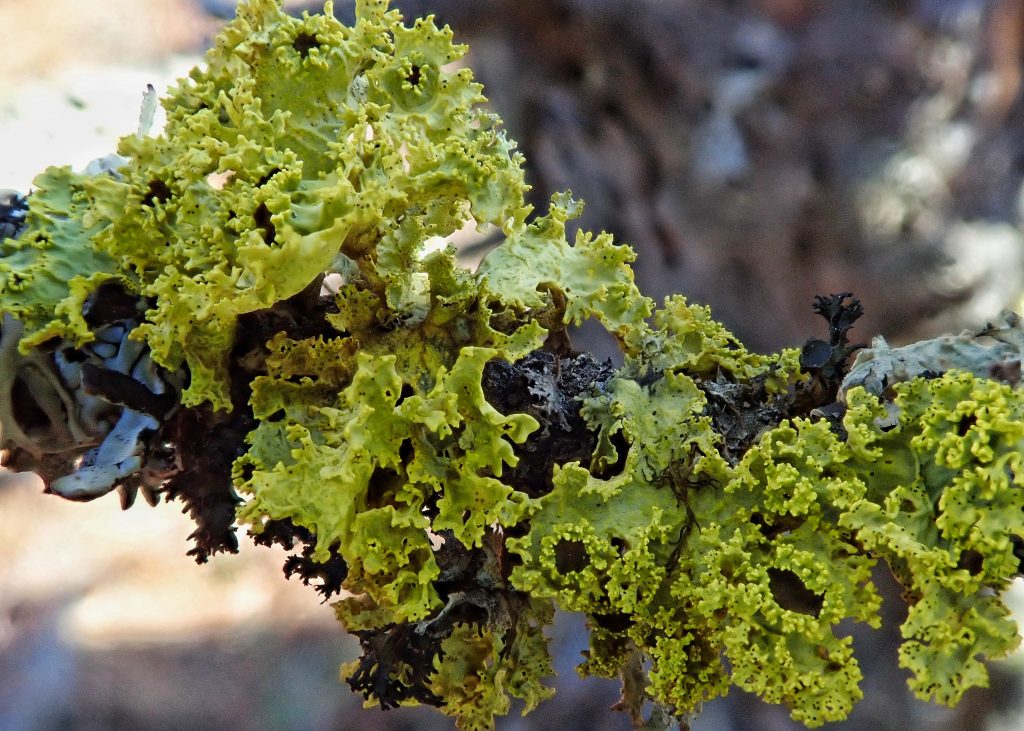
And with today’s lichen I don’t need to do so. Despite the fact that I had never seen Vulpicida canadensis in the wild, I didn’t even really need magnification to identify it, although I do love looking at lichens under the ‘scope. The combination of bright chartreuse thallus, and large brown apothecia, is diagnostic in our region. That is a rare thing in a lichen and, beyond the fact that it is simply beautiful, is one of the reasons I memorized those characteristics and always keep an eye peeled for its presence in eastside forests, persistence which finally paid off.
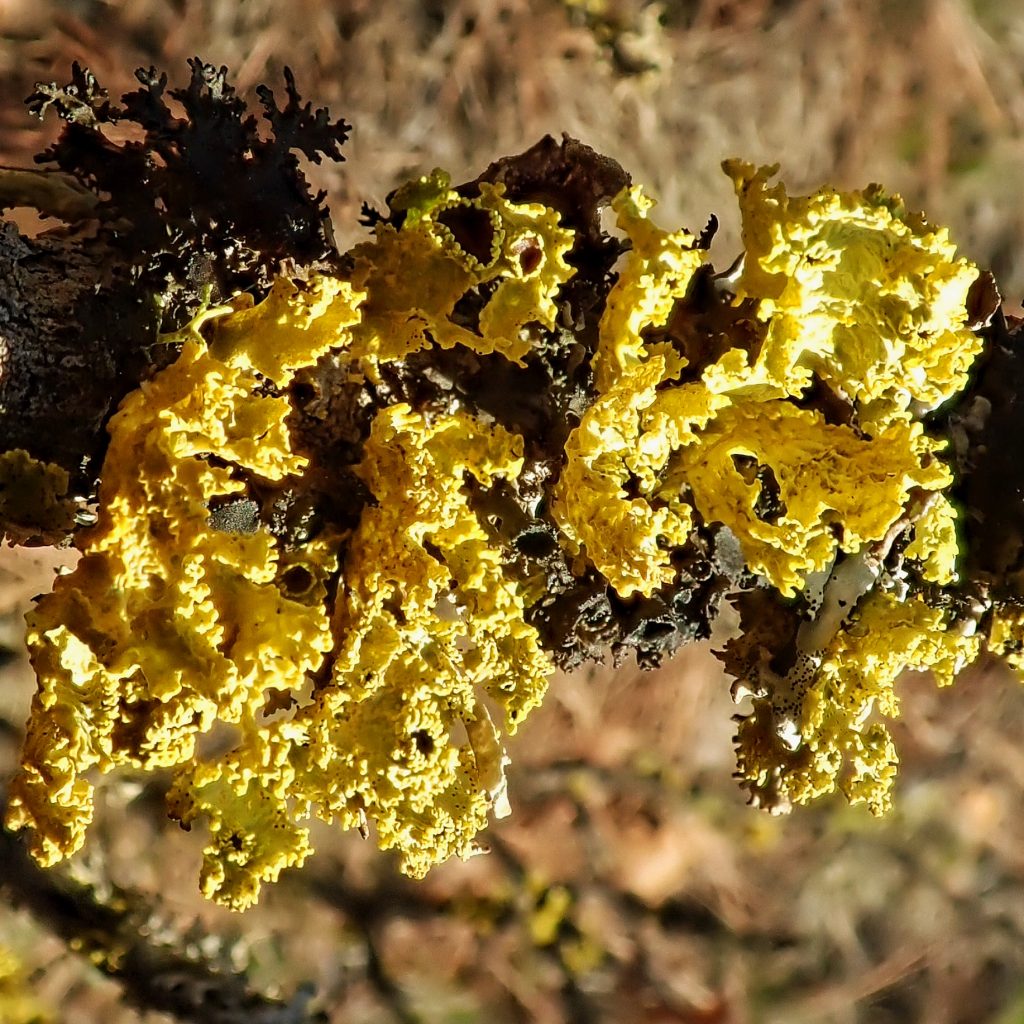
Description– Bright chartreuse thallus (a growth form, or habit, that is flattened like a lettuce leaf), with large (by lichen standards) brown apothecia.
Similar species– Nothing really similar in our region. V. pinastri usually lacks apothecia and has more ruffled, powdery margins, and Cetraria pallidula is much paler.
Habitat– On wood or bark of shrubs and conifers, especially pines and larches.
Range-Region wide, more common east of the Cascades.
Eaten by– Nothing with any sense. It contains vulpinic acid, which is poisonous, and which gives it the yellow color.
Etymology of names–Vulpicida is from Latin and means ‘fox killer’, a reference to a Scandinavian myth about this lichen, and the basis for the name vulpinic acid for its toxin. I cannot ascertain exactly what canadensis references. It is not a purely northern species, being found well into California. And it isn’t an alpine species. My guess is the type specimen was from Canada.
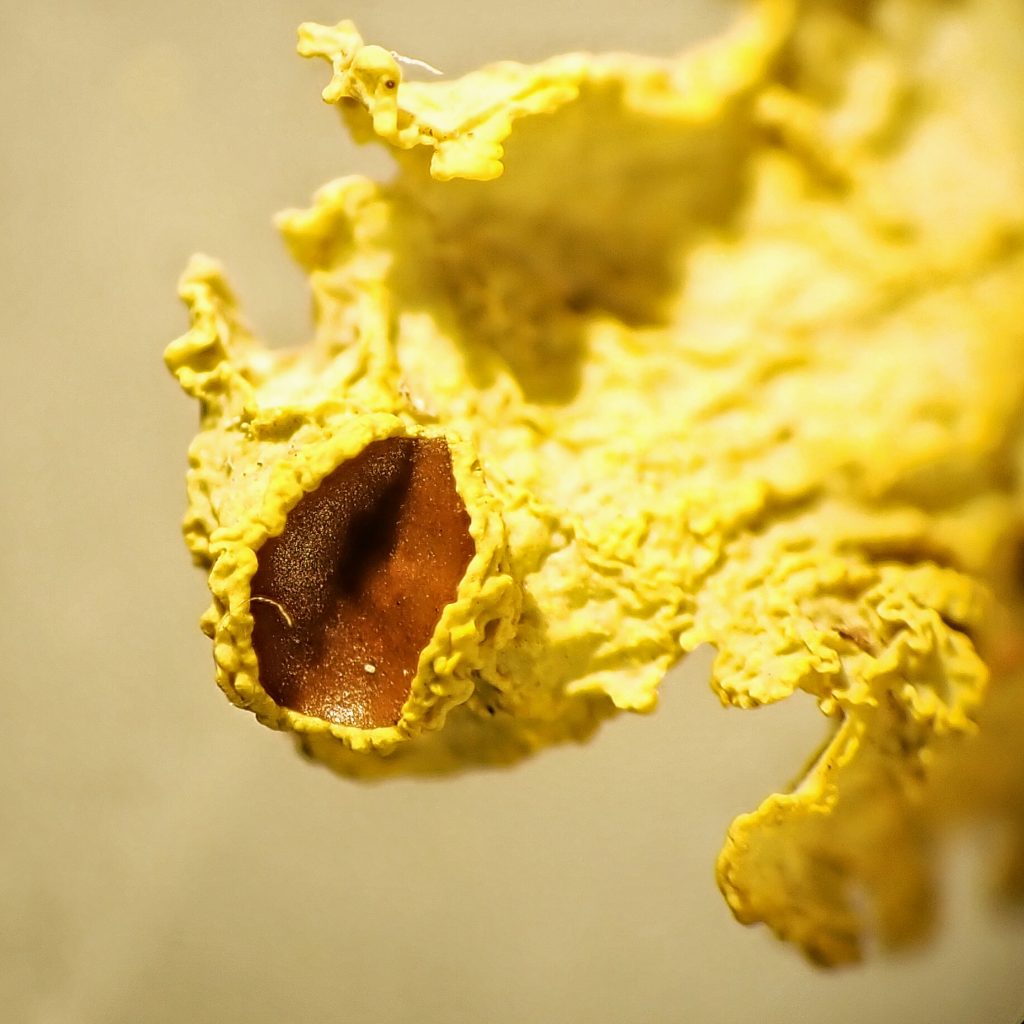
https://mushroomobserver.org/name/show_name_description/1099
https://northwestnaturalist.org/tag/vulpicida-canadensis/
https://science.sciencemag.org/content/353/6298/488.full
https://academic.oup.com/bioscience/article/51/12/1025/223980
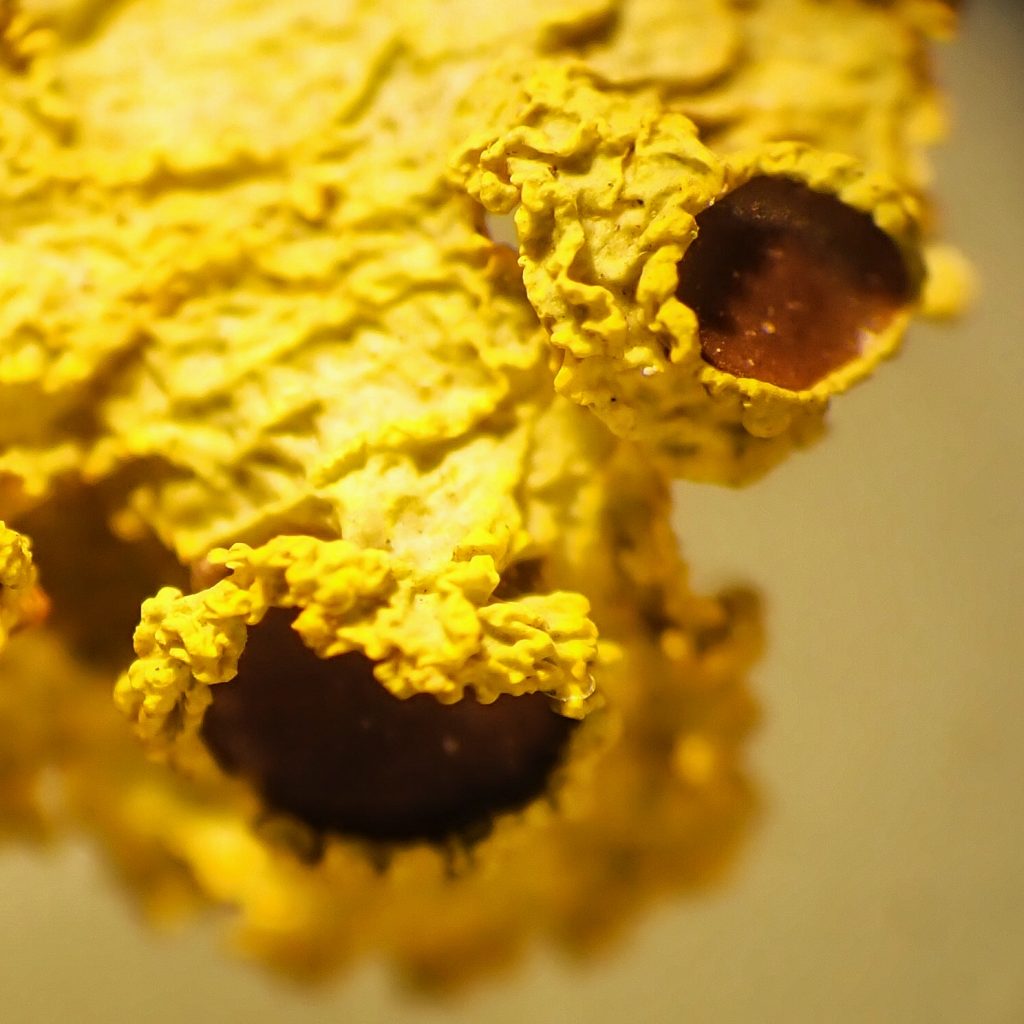
I didn’t realize lichen were so varied! Once when I did a “Snowshoe with a Ranger” tour at Mt Bachelor, he taught us “Freddy Fungus met Abby Algae and they took a Lichen to each other” 🙂
Thanks so much for this illuminating article!
You are so welcome! Thanks for the appreciation!
The complexity of the lichen is surprising! Well done 👍
I didn’t think it possible to be so intrigued by by lichen, but here I am totally absorbed and eager for more! Thank you!
Thanks for you interest and appreciation. There will certainly be more to follow. Winter is my time to look for mosses and lichens.
Trevor likes to say lichens discovered agriculture, I like to say they invented agriculture.
I see what you mean!